An Kerui Cui Tingyu
Jiangsu Ankerui Electric Appliance Manufacturing Co., Ltd.
Abstract: The new district hospital in the northern part of Zhaotong City employs a smart power meter to collect various electrical parameters and switch signals at the distribution site. After networking, it communicates via field bus and transmits data to the background system remotely. The Acrel-3000 power management system enables real-time monitoring and efficient power management of circuits within the hospital.
Keywords: North New District Hospital of Zhaotong City; Smart Power Meter; Acrel-3000; Power Management;
0. Preface
As electric power networks continue to develop, the increasing use of electricity and the emergence of new loads have raised user concerns about energy efficiency and reliability. Users now demand more effective power management solutions to ensure continuous, stable, and cost-efficient operation of their power distribution systems.
Acrel-3000 is an integrated power management system that combines intelligent monitoring devices with fieldbus and Ethernet communication technologies. It uses computer software to create a distributed network structure, enabling comprehensive management of power distribution terminals and real-time monitoring, acquisition, and analysis of energy data across high and low voltage systems.
1. Project Overview and Objectives
Located in the northeastern part of Yunnan Province, the North New District Hospital of Zhaotong City serves as a key healthcare facility in the region. It is situated at the intersection of Weixin Road and Caiyun Road in Zhaoyang Industrial Park. The hospital adopts a "professional and small-integrated" model, offering a wide range of departments including general surgery, orthopedics, internal medicine, emergency care, gynecology, stomatology, ophthalmology, and geriatrics. It also includes five specialized centers such as dialysis, physical examination, rehabilitation, inspection, and radiology imaging.
This project involves collecting real-time data from Ankerui smart power meters installed in the hospital. The system displays the status of the primary distribution map and monitors voltage, current, and power for each circuit. Customized energy reports are generated to track power consumption effectively.
2. Design of the Power Management System
The design of the monitoring system takes into account customer needs, the actual structure of the power system, and load capacity. Choosing appropriate monitoring equipment helps reduce operational costs while ensuring the system's functionality and efficiency.
The power management system allows real-time monitoring of distribution circuits, which is crucial for effective power control. It provides accurate visualization of power status, supports network communication, and integrates with computers and serial servers to display the condition of each circuit. When the load exceeds limits, the system quickly alerts users with voice prompts. Additionally, it generates statistical reports and graphs to assist in analyzing power consumption and improving maintenance efficiency.
2.1 System Architecture
Based on the distribution layout of the North New District Hospital, the online monitoring system follows a hierarchical distributed structure. It consists of three layers: station management, network communication, and field device layer. The system architecture is illustrated in the figure below:
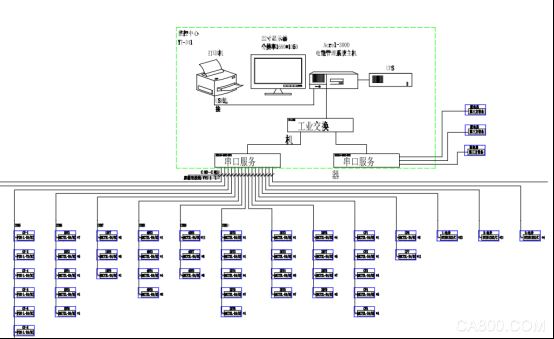
The station management layer interacts with the system through human-computer interfaces, allowing operators to analyze and process data collected from the field. This layer includes industrial-grade computers, printers, and UPS power supplies.
The communication layer uses a serial server to facilitate data exchange between field devices and the upper system. It collects, classifies, and forwards data from the field, as well as transmits control commands to the field devices.
The field device layer connects various instruments used for measuring electrical parameters. Instruments like the ARC72 series and DTSD1352 series monitor three-phase current, voltage, frequency, power, and other parameters, while also tracking the status of circuit breakers.
2.2 Network Design
The network system in the power management system ensures timely data transmission and quick execution of operation instructions, forming the basis for all system functions. Devices on-site are connected via field buses, which then link to a communication collector to interface with the host system.
2.3 Monitoring System Software Function Design
The system is designed based on customer needs, offering features such as main wiring diagram display, remote measurement of electrical parameters, limit alarms, event logging, abnormal monitoring, fault alerts, report querying, real-time and historical load curves, and user rights management.
2.3.1 Data Acquisition and Processing
Data acquisition involves both analog and digital inputs. Analog data includes line voltage, current, power, power factor, and frequency, while digital data captures switch status, alarm information, and fault events. Real-time remote data display is achieved, and processed data is stored in a database for user access.
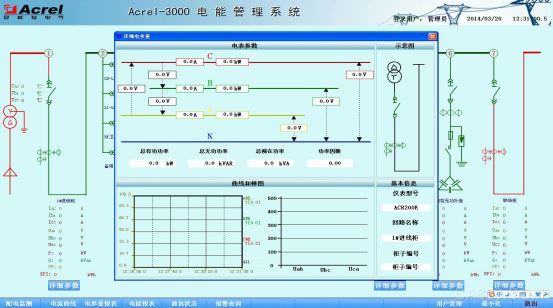
2.3.2 Data Report Statistics
The energy management system provides detailed reports that reflect the integrity of the metering system. It supports periodic meter reading and data collection, allowing users to query power usage for any time period since the system’s operation began. This function enhances transparency, enables traceability of power discrepancies, and maintains the accuracy of the measurement system.
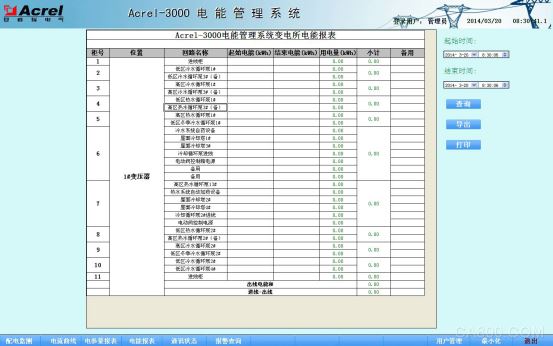
2.3.3 Current Curve Query
The power management system designs load trend curves for the main incoming circuits or critical loads. This feature helps maintenance staff monitor power demand and system load distribution in real time, ensuring reliable power supply and protecting user rights. It also aids in analyzing energy demand trends, adjusting reports, and reducing unnecessary payments due to excessive demand deviations. Additionally, the system records fault data, storing real-time current and voltage values during failures, which assists in troubleshooting.
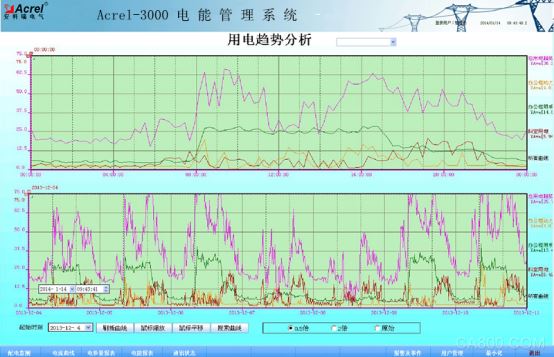
2.3.4 User Rights Management
User rights management ensures the safe and stable operation of the power management system by preventing unauthorized operations, such as modifying circuit names. It allows defining login credentials and access levels for different users, ensuring secure and reliable system operation, maintenance, and management.

3. Significance of Building an Energy Management System
With societal development and widespread electricity use, power management systems have become essential for large-scale multi-substation users in major engineering projects and industrial enterprises. The Acrel-3000 system implemented in the North New District Hospital of Zhaotong City enables real-time monitoring and efficient power management of high and low voltage circuits. It not only shows the power status of each circuit but also offers network communication capabilities. The system processes collected data, displays real-time status of distribution circuits, triggers alarm dialogues, and generates energy reports and analysis graphs, facilitating remote meter reading and research. The system is safe, reliable, and stable, providing a solid foundation for solving power issues and achieving good economic benefits.
References:
[1]. Ren Cheng, Zhou Zhongzhong. Principles and Application Guide for Digital Meters for Electric Power Measurement [M]. Beijing: China Electric Power Press, 2007.
[2]. Zhou Zhongzhong. Product Selection and Solution for Smart Grid User End Power Management System [M]. Beijing: Machinery Industry Press, 2011.
About the Author: Cui Tingyu, male, undergraduate, Jiangsu Ankerui Electric Appliance Manufacturing Co., Ltd. His main research focus is on intelligent building power supply and distribution monitoring systems. Email: el.cn. Mobile: [Insert Phone Number]. Fax: [Insert Fax Number]. Website: http://[Insert URL].
All black solar panels or black frame Solar Panel, power range around 400w to 460w which is higher solar panel efficiency the front black or front and back are both black.
All black solar panel data
| mono type | mono crystalline half cut cell |
| power range | 400watt to 460watt |
| dimensions | 1176*1134*30mm |
| type | monofacial type or bifacial type |
Product details and pic
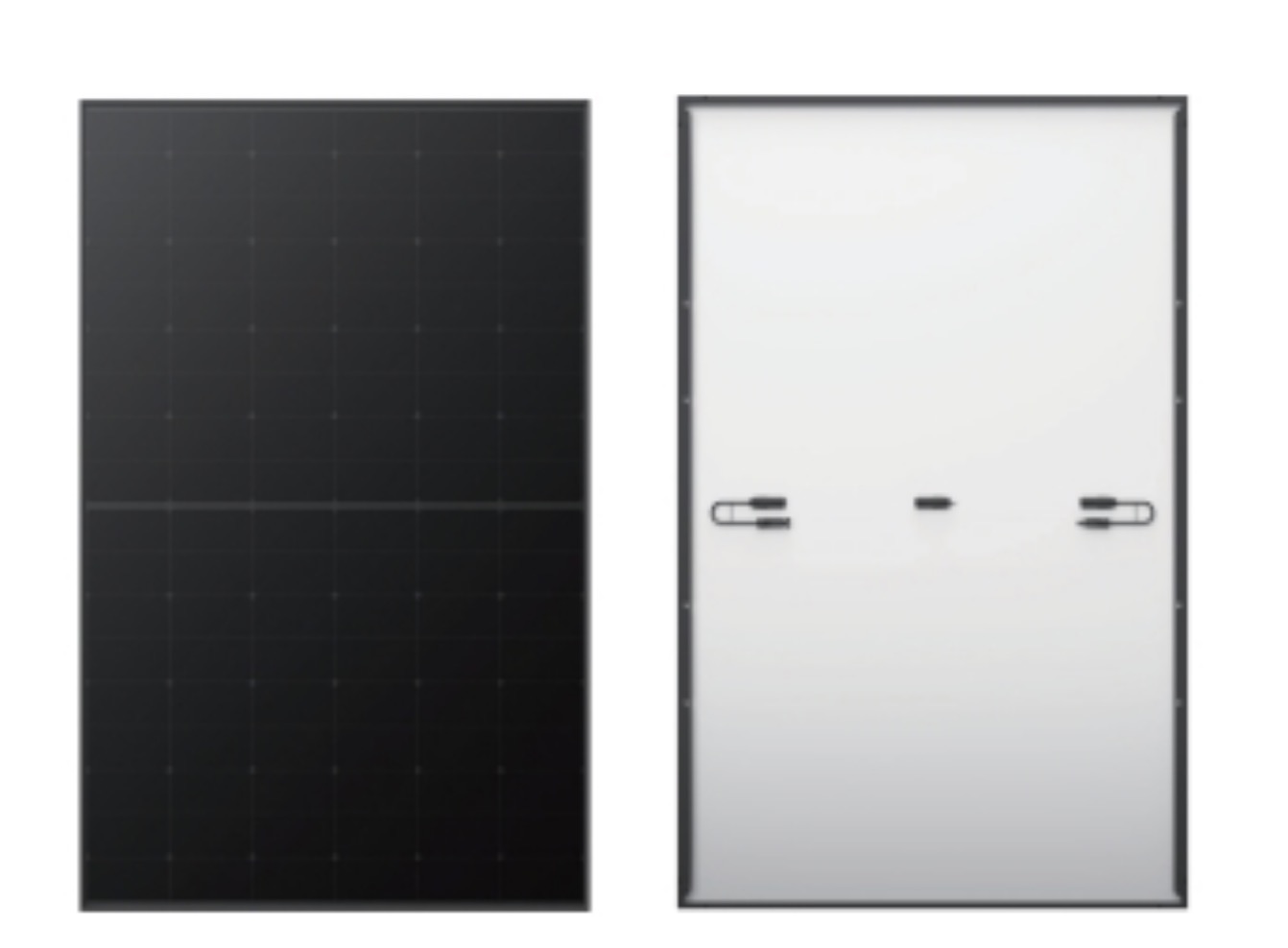

All Black Solar Panel,Trina Solar Panel Vertex S,Mono Crystalline Pv Modules,Full Black Solar Panels 420Watt
PLIER(Suzhou) Photovoltaic Technology Co., Ltd. , https://www.pliersolar.com